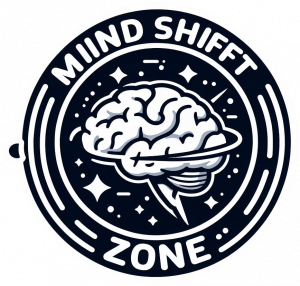You may not know it, but you’re a coach.
You may not be certified, but you’ve been coaching yourself since you can remember.
As a child, you coached yourself how to get back on the playground after you fell off the climbing bars and scraped your knees.
Later, you coached yourself how to pick up the pieces in your life after your first bad breakup.
Your self-coaching stems from your ability to harness your inner wisdom and experiences to make choices that are best for you.
By the way, traditional coaching involves an external guide, usually a trained professional, self-coaching is an internal process. The latter places you in control, emphasizing personal agency and introspection. That said, both approaches can complement each other, with traditional coaching providing external perspectives and self-coaching fostering intrinsic growth.
In this post, we’ll learn more about how you can coach yourself, especially with a more defined routine, to develop the habits and behaviours to live your best life.
What is Self-Coaching?
Self-coaching isn’t hard to wrap your head around. You’ve probably done some self-coaching before without even realising it.
Self-coaching is when you cultivate your own personal development by accessing your inner wisdom.
While you could get an outside expert opinion from a psychologist or a mentor, you could also just trust your instincts and be your own judge! After all, no one knows you better than yourself.
Don’t think that just because you coach yourself, it means that you’re weak or insecure. In reality, no one is complete – no matter what life stage they’re in. There’s nothing wrong with viewing yourself as a work-in-progress. You’re simply at one stage in a very long journey toward self-improvement and development. In fact, if you have the confidence to recognise your goals and abilities, it’s a sign that you’re comfortable in your own skin, not the opposite.
Self-Coaching in Practice
So what does self-coaching look like?
It can be anything from coming up with an action plan, listing your strengths and weaknesses, reading a self-help book, or enrolling in a night class to supplement your learning. These are the types of activities that you’d do with a professional contracted coach. Working through the exercises on your own means you’re doing some self-coaching.
Imagine that you’re interested in learning to quilt. Where do you start? Do you do an online search or head to your local library for some research? Maybe you ask a friend that you know is knowledgeable about quilting.
Guess what? All of those actions are part of a self-coaching routine. There’s a really good chance that you’ve done something similar in your life – it just may not have been about quilting!
Once you know what self-coaching is, you’ll see it working in almost everything you do.
5 Ways To Self-Coach:
Here are some easy ways to self-coach:
- Identify your interests. To start your self-coaching path, the first step is to figure out what you want to work on. However, that might not come naturally for everyone. We know a few exercises that can help, like the wheel of life, the why-finding activity or the Johari Window. We’ll take a closer look at each one a little later in this post.
- Set goals for yourself. Outline the actions that you need to accomplish to make your dream a reality.
- Create a personal development plan. A good self-coaching routine starts with a plan. There are some easy steps that you can do to make your own plan here.
- Educate yourself. Learning is a core tenet of self-coaching. The good thing about having a plan and a routine is that you’ll be ready to study in an impactful way. You’ll do it not necessarily on an academic or technical level but for a deep and intellectual purpose, which enhances personal growth.
- Hold yourself accountable. Part of any great coaching plan is to incorporate accountability mechanisms. You can do this by setting up milestones, tracking progress and celebrating your successes. Don’t forget to learn from your defeats, too!
Tools and Resources for Effective Self-Coaching
Navigating the self-coaching journey is enriched by leveraging diverse resources tailored to our evolving needs:
Books:
Delve into classics like Stephen Covey’s “The 7 Habits of Highly Effective People” for life principles or James Clear’s “Atomic Habits” for insights into habit formation. Biographies, too, offer unique perspectives on personal growth—consider Michelle Obama’s introspective “Becoming.”
Online Courses:
E-learning platforms such as Coursera and Udemy democratize access to knowledge. Whether it’s emotional intelligence, resilience, or goal-setting, world-class expertise is now just a click away.
Apps:
Our smartphones can be powerful allies. Journaling apps like ‘Day One’ help capture reflections. ‘Calm’ offers guided meditations for mindfulness, while tools like ‘Trello’ streamline our action plans.
Communities:
Engaging in online communities, be it Reddit’s r/selfimprovement or niche forums, can be transformative. They’re hubs for shared experiences, questions, and collective wisdom.
Analog Tools:
Despite our digital age, the tactile experience of pen on paper remains invaluable. Whether it’s mind mapping ideas, journaling thoughts, or simply sketching a vision board, there’s an unmatched organic quality to these methods.
Self-Coaching Exercise: The Wheel of Life
There’s a coaching technique that’s so simple and effective that many business and life coaches use it as an exercise with their clients.
It’s called the wheel of life, and it’s a great exercise that you can do at home to get a handle on your self-development.
All you have to do is consider how you currently spend time in your life and how satisfied you are with each activity during your day-to-day schedule.
It should include any area that’s important to you. That includes financial, career, family, social, health, romance and hobbies. You can probably think of even more categories than that.
Here comes the “wheel” part – categorise your activities into a circle, like a pie chart. Each slice of the pie is an important aspect of your life.
Now, score your sense of satisfaction for each category. You can use a numbered scale from 1-10 or some other way to rank them. Rate them based on the level of reward you feel and the amount that each one excites you.
Once everything’s ranked, it’ll be easy to notice which areas of your life need the most work.
The goal of the exercise is to get a snapshot of your current satisfaction in life. It’ll provide you with some details about where to start your self-coaching journey. Through self-growth, you’ll find ways to raise the scores until they’re balanced to acceptable levels based on how you prioritise each one.
Self-Coaching Exercise: Finding Your Why
Another really great exercise that you can do on your own, at home, is to find your why.
Your why is a fundamental part of your coaching process because, according to many theories of motivation if you find it, you can use it to your advantage to stay motivated and accomplish your goals.
Read our motivational blog to find your why.
Your why is your deepest-rooted passion. It’s the fire in your belly, so to speak. If you have a goal in mind, simply ask yourself “why do I want to accomplish this goal?” The answer is usually associated with powerful emotion.
Then, ask yourself again. And again. And again!
It sounds tedious but it can actually be pretty fun and enlightening. Eventually, you’ll get to the bottom of it all and unlock your deepest motivator.
Let’s look at an example:
- If you want to learn how to dance Flamenco, ask yourself “why?”
- If the answer is “to learn how to dance”, then keep going: why?
- You might realise that the reason you want to take dance lessons is to spend more time with your husband or wife. But don’t stop there! Why do you want to spend more time with them?
- Eventually, you might realise that your desire to dance is rooted in an emotional longing to connect with your husband or wife for fear of growing too distant from them.
As you can see, the “why” sequence can help with some amazing introspection. Now that you know more about the emotions that drive your interests, you can plan accordingly!
Self-Coaching Exercise: Vision Board Creation
A vision board is a tangible representation of your aspirations, goals, and dreams. By visualizing what you want to achieve, you’re more likely to stay motivated and work towards those objectives.
You need to do the following:
- Gather magazines, newspapers, colored paper, scissors, glue, markers, and a poster or corkboard.
- Spend a few minutes thinking about your goals, dreams, and aspirations. What do you want to achieve in the next year, 5 years, or decade?
- Browse through the magazines and newspapers. Cut out images, words, or phrases that resonate with your aspirations.
- Lay out your chosen items on the board. Group them by themes or timelines, whatever feels right.
- Place the board in a spot where you’ll see it daily. This will serve as a daily reminder of your goals and ambitions.
Self-Coaching exercise: The Rose, Thorn, Bud Technique
This simple exercise of reflection helps to identify the strengths of challenges, as well as potential opportunities you face in your day-to-day life. You must follow these steps:
Rose (Highlight):
Think about your most memorable day or your week. What was successful and what brought you joy?
Thorn (Challenge):
List an obstacle or challenge that you have encountered. What made you feel? What could you have implemented differently?
Bud (Potential):
You can recognize an opportunity that is growing or something you’re eager to see. It could be an upcoming event or event, a new skill or even a goal for the future.
Doing this routinely will help you develop gratitude, acknowledge challenges and remain positive regarding the future.
Self-Coaching Exercise: Weekly Reflection Hour
Making time to reflect ensures that you stay in the present and aware of your progress. You will allow you to adjust if necessary. You just need to follow these steps:
- Find a tranquil and away from distractions area. It could be a study area, a park or even a quiet corner in a café.
- Start by logging your achievements however tiny. Honor these.
- Recognize areas where you ran into challenges. What lessons can be learned and what could you change next time?
- Write down your goals for this week. What are the steps you can make to help you reach your bigger objectives?
- Spend the final few minutes of silence, focusing on the art of deep breathing, or meditation. This calms your mind and helps you prepare for the next week.
If you regularly engage in this practice of reflection to stay in line with your objectives, be happy about small victories, and continue to expand.
Next up
Try out some of the exercises, above, and get into the routine of self-coaching. It can be a great supplement to the other development activities you do, such as your work with a mentor or coach or working on the goals in your career plan.
If you’ve gone through the exercises and still feel like you’re hitting a wall with your self-development, there’s plenty more you can do to help stay on track. Did you know that your mindset plays a huge role in your ability to grow as a person? For more information, try checking out our post on self-belief and how a strong self-belief system can help you accomplish your coaching goals.
Ready to take the next step?











